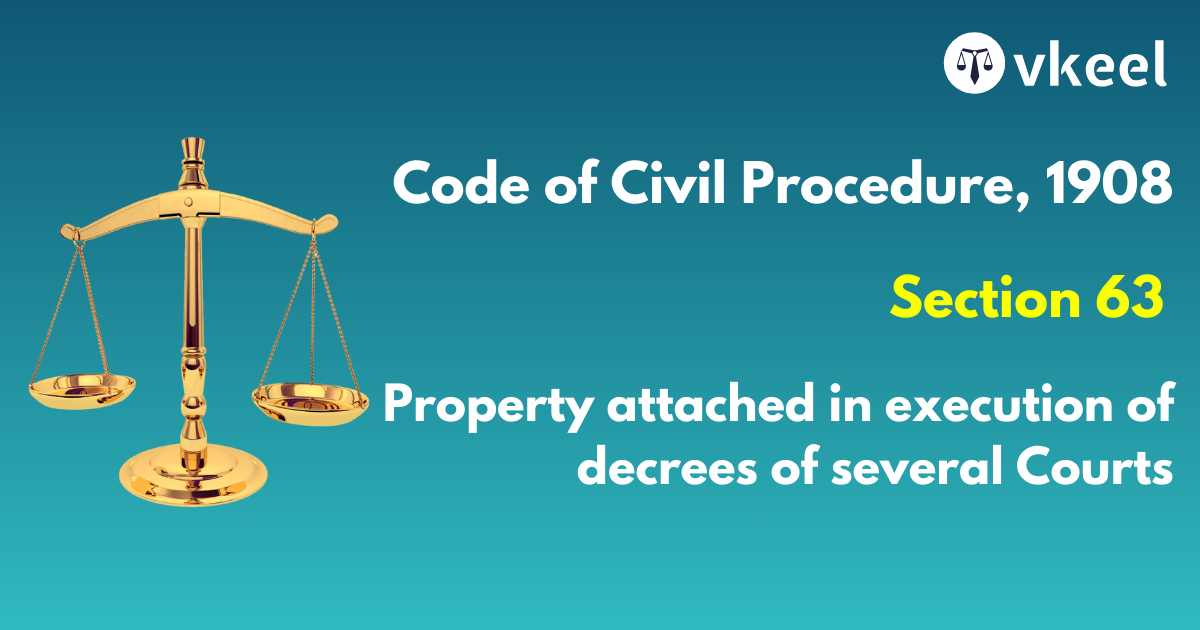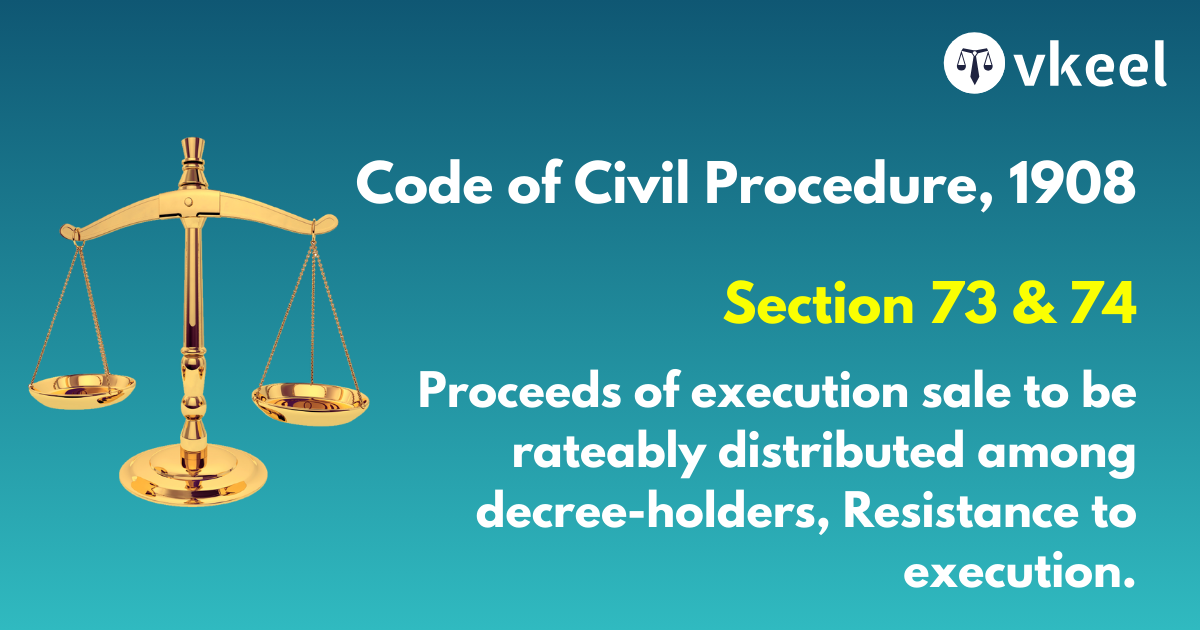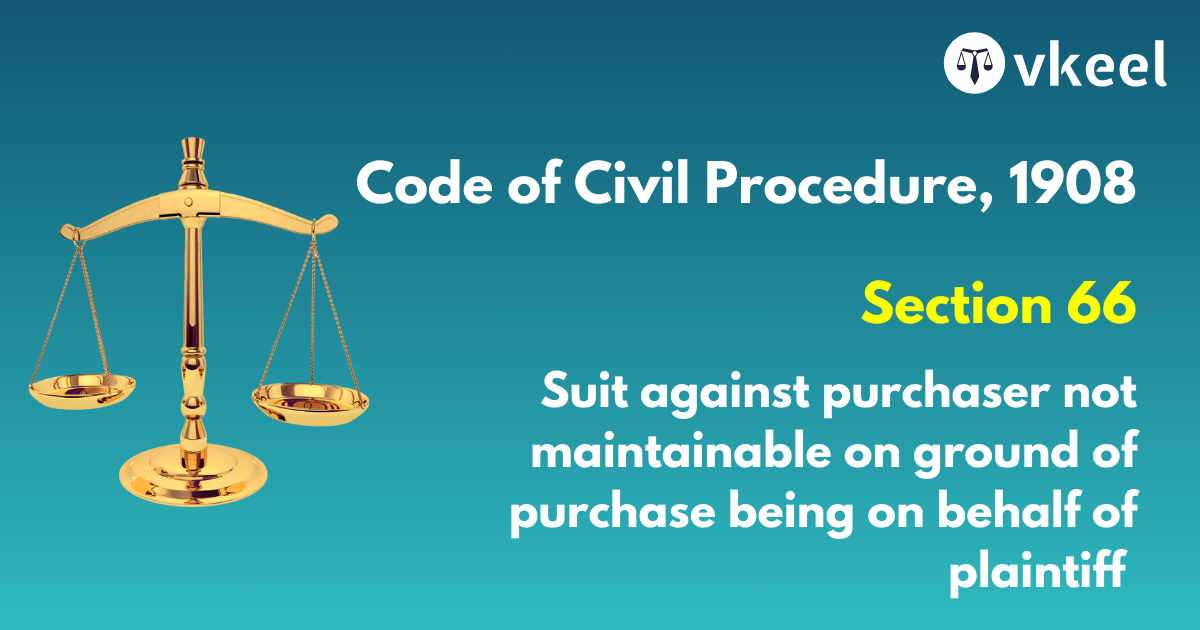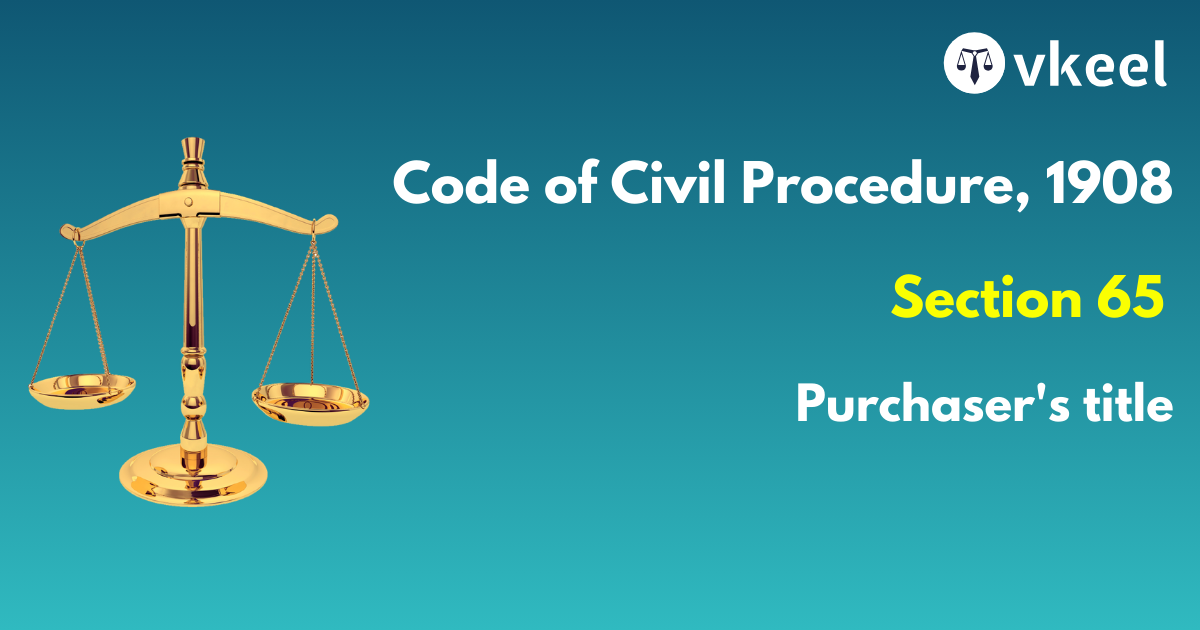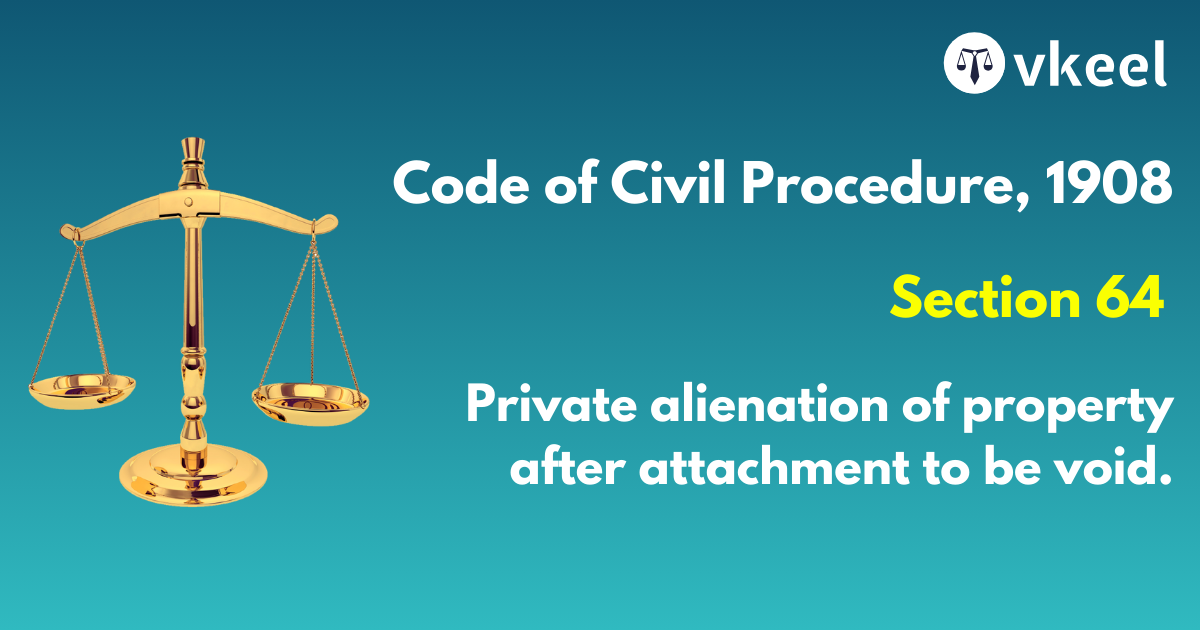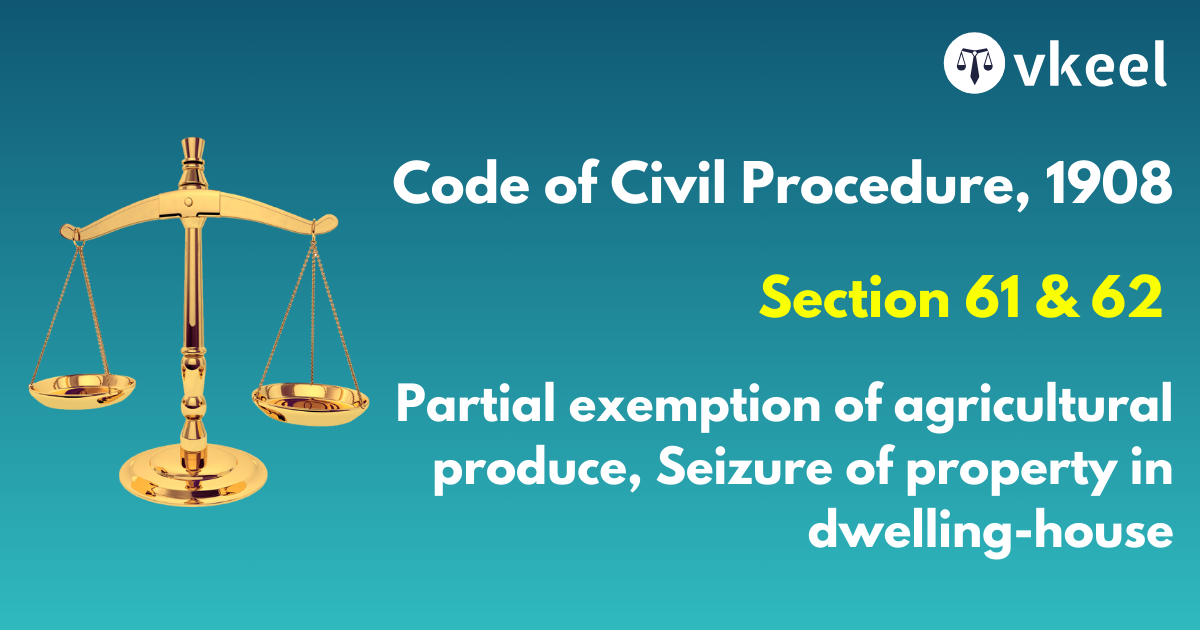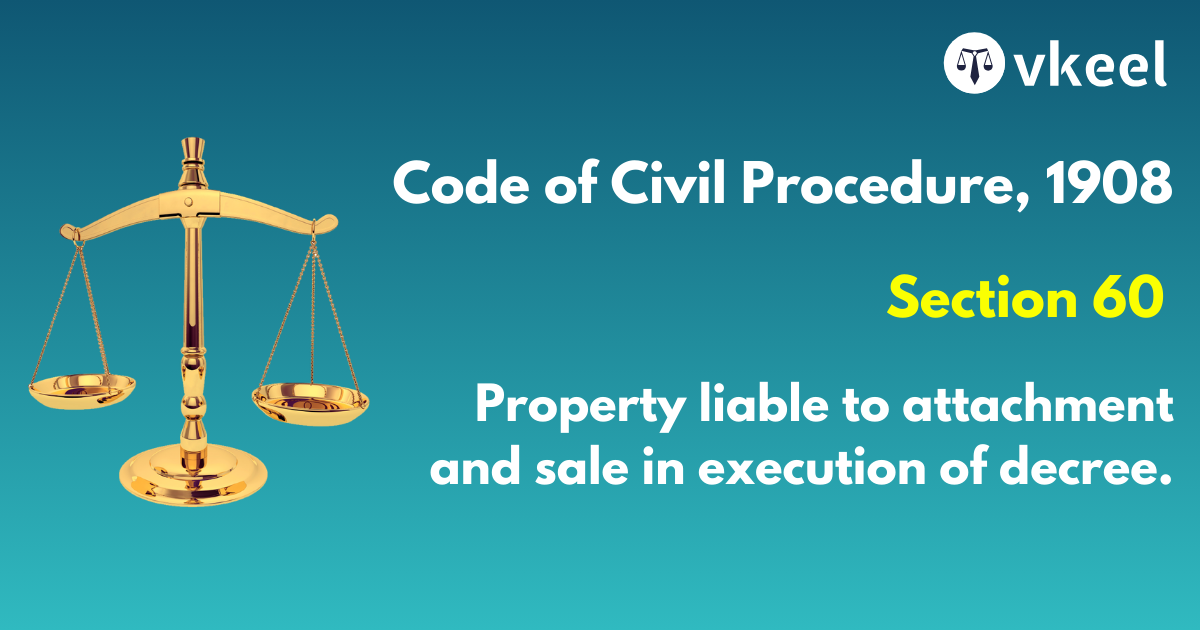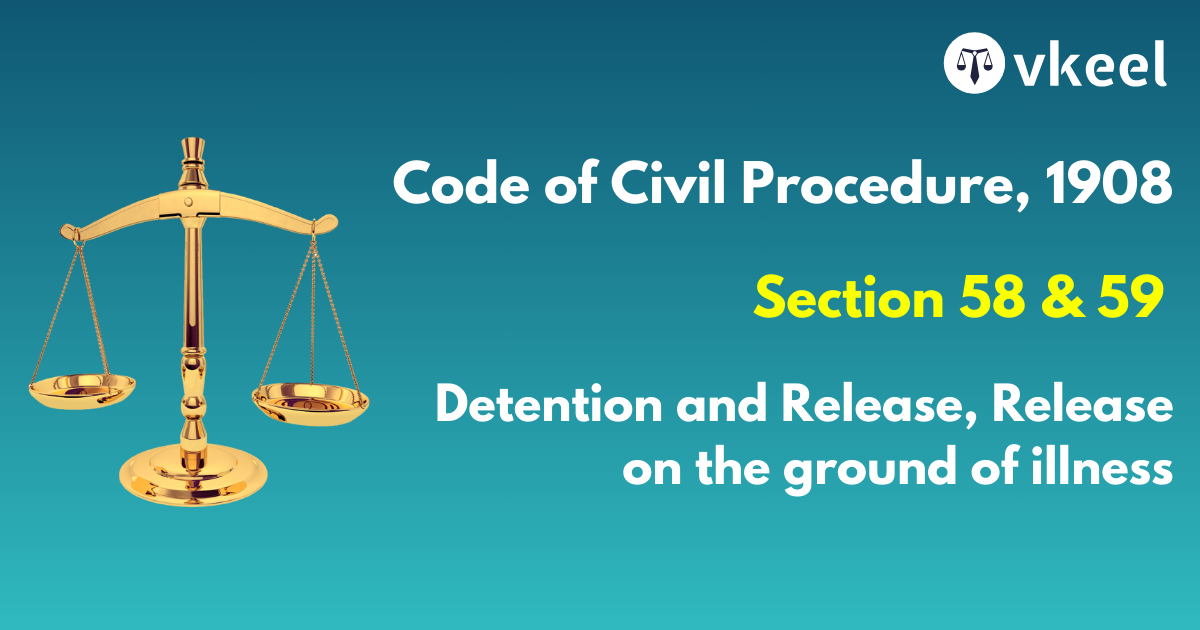Section 63 of the Code of Civil Procedure, 1908
By Joy Puri
Introduction
The Section 63 of the Code of Civil Procedure, 1908 thereby talks about the property attached in execution of decrees by different courts.
It therefore clarifies about how the property of a judgment debtor should be handled when it is attached in multiple decrees, ensuring there is no conflict between different courts.
Section 63 of the Code of Civil Procedure, 1908
Property attached in execution of decrees of several Courts.
(1) Where property not in the custody of any Court is under attachment in execution of decrees of more Courts than one, the Court which shall receive or realize such property and shall determine any claim thereto and any objection to the attachment thereof shall be the Court of highest grade, or, where there is no difference in grade between such Courts, the Court under whose decree the property was first attached.
(2) Nothing in this section shall be deemed to invalidate any proceeding taken by a Court executing one of such decrees.
Explanation – For the purposes of sub-section (2), “proceeding taken by a Court” does not include an order allowing, to a decree-holder who has purchased property at a sale held in execution of a decree, set off to the extent of the purchase price payable by him.
Landmark Case Laws
Surendra Vs Jamini, 1936
Section 63 contemplates the case where attachments of the same property have been made by different courts at the instance of the different decree-holders of the common judgment- debtor and provides for the distribution among them the proceeds of the attached property by one of such courts only. The principle underlying is the convenience, avoidance of multiplicity of proceedings and fair distribution and not exclusion.
Jagdish Vs Bhim, A 1980 D 283
Other decree-holders are not: entitled unless they get their execution applications transferred to the Court which physically receives the assets, before the same are received
Ramchandra v Digambar, 1960
The duty of executing all decrees and distributing the assets rateably amongst different creditors is cast upon the court of the highest grade, and if all the courts be of the same grade, then the court which first attached the property. Such court may, if the property has already been sold by another court, call upon that court to send to it the sale proceeds of the property and after receiving the sale proceeds will adjudicate upon the claims of the various decree-holders and distribute the amount between them in accordance with the provisions section 73.
Radha Vs Dwarka, 1946
The court that wants to decide the question of rateable distribution, if it wants to proceed under section 63 read with section 73 must be the court which has attached the property. But if the superior court has not attached any property, it cannot be approached for distribution.
Laxminarayan Vs Ram, 1971
Section 63 is not controlled by section 38. Where section 63 is applicable it is not necessary for the decree-holder claiming rateable distribution to apply for execution to the court holding the assets. It is sufficient if he has made an application for execution to the appropriate court, ie., the court which passed the decree or to the transferee court. All that is necessary is that his application for execution must be of a date prior to the date of the receipt of the assets.
Surendra Vs Jamini,1936
The funds available for distribution under section 63 are the proceeds of the common property attached by the judgment-creditors. Distribution of the sale proceeds have to be made rateably in the manner under section 73. Under section 63 the assets which are received or realised by the court of highest grade must be deemed to have been received or realised by or on behalf of all the courts in which there has been attachment in execution of decrees prior to the receipt of assets. It is in that view section 73 must be read with section 63
M Palaniappa Vs MM Pambana, 1975
Where attached property is in the custody of the attaching court, provision attracted is O XXI rule 52, and where several persons claim title to the property, it is the custody court alone that can decide priority among the several claimants, section 63 is not at all attracted in such a case.
Fatima Vs Ashananda, 1939
The words “under attachment” have made it clear that in order to attract the provisions of the section there must be two or more attachments existing at the same time. In order to bring a case within section 63 several decree-holders must have attached the same property or certain common properties of the judgment-debtor
Surajben Vs Raichand, 1963
Where property attached by higher court is sold in pursuance of a charge created by a decree by a court of lower grade, the higher court cannot call for sale proceeds as section 63 does not apply there being no attachment in execution of decrees of more court than one
Conclusion
This prevents any confusion or complications arising from conflicting orders of attachment, while protecting the interests of all the decree-holders involved.
Therefore, to boot up, Section 63 ensures that if the same property is subject to attachment by multiple courts, the execution process is coordinated and handled by the court that made the first attachment.
Disclaimer:
The information provided in the article is for general informational purposes only, and is not intended to constitute legal advice or to be relied upon as a substitute for legal advice. Furthermore, any information contained in the article is not guaranteed to be current, complete or accurate. If you require legal advice or representation, you should contact an attorney or law firm directly. We are not responsible for any damages resulting from any reliance on the content of this website.

